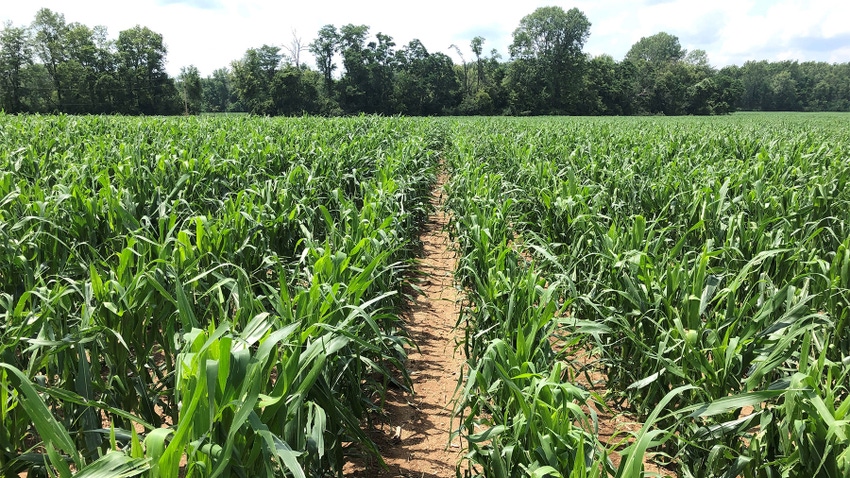
One of the biggest tests of patience in farming is waiting for corn to recover after being hit by hail. Nothing looks worse than a field that was thriving one day and is battered the next.
“If you have a field hit by hail or battered by wind, you need to ask yourself several questions,” says Dave Nanda, director of genetics for Seed Genetics Direct, sponsor of Corn Watch ’23. “Once you answer those questions, check out information used by insurance hail adjusters to determine yield impact on corn from hail.
“Often, damage turns out to be less than you first think, especially earlier in the season. Many factors combine to determine whether storm damage on corn is primarily unsightly and a nuisance, or if it delivers a large yield hit.”
Here are basic questions to consider. They’re not based on the Corn Watch ’23 field, which has escaped wind and hail damage so far this year, but on a field in the same general area.
What does the field look like several days after the storm? It’s going to look worst immediately following the event, Nanda says. Most hail adjusters advise waiting a week before making assessments. That gives plants time to recover. What will grow back becomes clearer.
What stage of growth was the crop in when the storm hit? If the crop hasn’t reached the reproductive stage, damage may look severe, but yield impact may still be insignificant, Nanda says. Damage to leaves during the reproductive stage, when the plant is attempting to feed kernels on an ear, becomes more critical.
What percentage of the total plant was defoliated? How much total leaf mass was lost? Estimating loss of leaf tissue can be difficult, especially when leaves are shredded but still on the plant. Base estimates on the total leaf area of the entire plant, not just what percentage of a few individual leaves are lost.
Are key parts of the plant still intact? Even if a corn plant was at the V10 to V12 stage, if stalks are not bruised and the whorl is still intact, overall damage may be limited. If the tassel inside a V12 whorl is still intact, and leaves aren’t wrapped into a ball, normal development should occur.
How much regrowth can occur? For corn, tattered leaves will remain tattered. However, leaves not yet emerged from the whorl, if the whorl was undamaged, should be normal.
Crop damage assessment
After you’ve answered these questions, you can make an assessment. Use the defoliation chart for corn found in the Purdue University Corn & Soybean Guide. Here are examples:
Six-leaf corn, 50% defoliation. 0% expected yield loss; damage estimates start at V7 corn
10-leaf corn, 50% defoliation. 6% expected yield loss, or 12 bushels per acre on 200-bushel yield
12-leaf corn, 50% defoliation. 9% expected yield loss, or 18 bushels
12-leaf corn, 75% defoliation. 16% expected yield loss, or 32 bushels
15-leaf corn, 50% defoliation. 15% expected yield loss, or 30 bushels
Tassel, 25% defoliation. 9% expected yield loss, or 18 bushels
Tassel, 50% defoliation. 31% expected yield loss, or 62 bushels
Blister stage, 50% defoliation. 22% expected yield loss, or 44 bushels
Milk stage, 50% defoliation. 18% expected yield loss, or 36 bushels
Dent stage, 50% defoliation. 7% expected yield loss, or 154 bushels
Read more about:
Hail DamageAbout the Author(s)
You May Also Like




